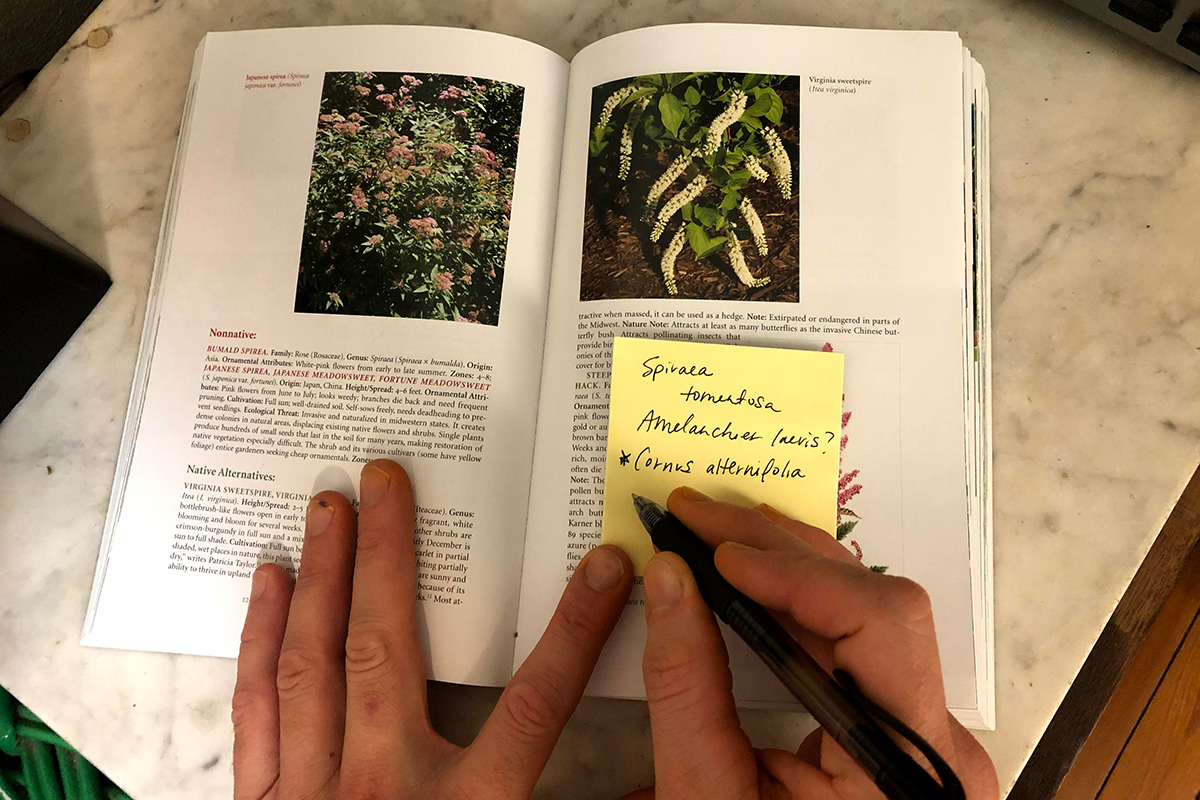
Create a winter container. Fill a beautiful container with clippings from your garden to enjoy during the winter months and extend the gardening season. Containers are an adaptable and versatile element of the landscape that can display plant colors, textures, and forms that are unique to this time of year. Most if not all the material you need can be found just outside your door. Whether your container is large or small, or for use indoors or outdoors, grab your pruners, step outside, and give it a go this season. Learn more about creating a winter container here:

Plan out your growing schedule. After you’ve ordered your seeds for next year, spend some time this month developing a week-by-week seed-sowing schedule. Depending on your experience and what you’re growing, a little research will go a long way in ensuring your plants are ready for transplanting out at the right time. Start by determining your finish date, or the day or week you want to have things ready to be installed in the landscape. This is typically right after the average last frost date for your location. Then go through your seeding list and work backward from your finish date to determine your sowing dates. Here’s an example of this process: A petunia takes 7 to 10 days to germinate and 10 to 12 weeks to finish growing. Let’s say your last frost date is May 21. In that case, you would want to start your petunias 13 weeks prior, which is the second-to-last week of February. Repeat this process for your remaining annuals and perennials, and you will have a sowing schedule ready. For common plants grown from seed, reference the January, February, March, and April Northern Plains to-do lists for when to start your seeds.

Propagate native trees and shrubs with hardwood cuttings. Create more of those native trees and shrubs you love by taking hardwood cuttings and propagating them. Shrubs such as redtwig dogwood (Cornus sericea, Zones 3–8), deciduous trees such as cottonwood (Populus deltoides, Zones 2–9), and evergreen conifers such as Rocky Mountain juniper (Juniperus scopulorum, Zones 3–7) are great candidates. Cuttings are usually taken from two-year-old wood, cut to a length of 6 inches or longer with the terminal growing tip removed, possibly treated with a rooting hormone depending on the genus, and placed in growing media. With a little trial and error, you can find the method that works best for you, so grab your pruners and find an excuse to do a little early-winter gardening. For more on propagating with hardwood cuttings, read on here.

Clean and sharpen your equipment. A little time invested in your tools now can save you a lot of time in the future. A quick and easy method to maintain digging equipment is to take a 5-gallon bucket of sand mixed with a little bit of oil. Since the sand is abrasive, it sharpens the tools as it cleans them; the oil helps prevent rust. Routine use throughout the season can help keep your digging tools on point. When it comes to your cutting and pruning tools, a simple file can keep most if not all of them sharp, allowing for more fluid use and reduced stress on your plants and your muscles. For more on cleaning and sharpening your tools, read on here.

Look back; look forward. Visions of sugar plums should not be the only things dancing in your head this month. Bust out your notebook, go through the plants you grew last year, and make notes about what worked and what didn’t. Then look at what changes you hope to make and the goals and objectives that you need to meet to make those changes a reality. Some possible questions to ask yourself: Is your full-sun garden becoming a full-shade garden? Did you see a container combination, perennial, shrub, or tree that really caught your eye that you would like to add to your landscape? Is there a disease or insect making its way toward your area that could be problematic? Being proactive now can ease the overall stress of managing your landscape and allow breathing room to deal with other issues that arise and that require reactive decision-making.
—Chris Schlenker is horticulture and grounds manager at McCrory Gardens of South Dakota State University in Brookings, South Dakota.


















Comments
Log in or create an account to post a comment.
Sign up Log in